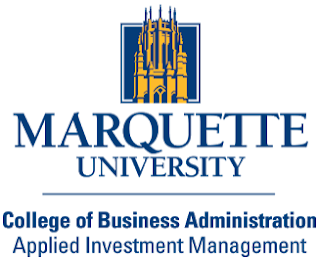Inogen, Inc. (INGN, $100.87): “Can Portable Oxygen Carry Them into the
Future?”
By: Tim Donovan, AIM
Student at Marquette University
Disclosure: The AIM
Equity Fund currently holds this position. This article was written by myself,
and expresses my own opinions. I am not receiving compensation for it and I
have no business relationships with any company whose stock is mentioned in this
article.
- Inogen, Inc (NYSE: INGN) is a medical technology company, which develops, manufactures, and markets portable oxygen compressors for people suffering from chronic respiratory disease. Inogen’s product line acts as a supplement to long-term oxygen therapy.
- INGN generated $202.8 million in revenue throughout 2016 from the sales of their proprietary product Inogen One, designed to be a portable single source supplement of condensed oxygen.
- With a market penetration of 8% of the estimated 2.5 billion to 3 billion people suitable for Inogen One, Inogen’s past success has not yet scraped the surface of the current market.
- Sales from the first half of 2017 reached $116.6MM which is up 19.5% compared to the same time frame in 2016.
- A unique direct sales business model allows Inogen to establish long term relationships with individuals as well as physicians.
Key Points:
As a disruptor to the long-term oxygen care industry, Inogen
has gained significant traction with variations of Inogen One, their flagship
product, since it was introduced to the market in 2014. Over the past 3 years
Inogen’s stock has increased nearly 450%. Part of the reasoning behind the
growth was the further development of variations of their Inogen One machine.
Today they offer three trim levels; G2, G3, and G4. Most notably, the new G4
model is a light and compact 2.8 pounds, catering to those who suffer from
these respiratory disorders yet still wish to lead a more active lifestyle.
Inogen’s executive team has reported that this expansion in their product line
has provided them with the opportunity to cater to 95% of ambulatory oxygen
patients with an increased ability to cater to the patient’s lifestyle.
Since 2014 Inogen has poured a significant of money into
more than just their product line. Unique from most medical device companies,
Inogen has their own in-house sales and marketing team. The direct-to-customer
model not only allows them to develop long standing relationships with
customers and doctors, but it eliminates the margin reduction from using a
durable medical equipment (DME) provider.
Over the past few years this unique business model and
product line expansion has caused significant growth in revenue as well as net
income. In 2016 Inogen has seen their top line reach $202.8MM up from $159MM in
2015. This 27.5% topline growth translated even further to the bottom line. Net
income over the same time period was up to $11.6MM, a 70.6% increase over 2015.
Despite this significant income growth Inogen is only capturing an estimated 8%
of the total target market. With an estimated addressable market within the
United States of 2.5-3 billion individuals the growth that has been seen over
the past 2 years has room to continue into the future.
Despite growth potential, there are risk factors to be taken
into account when looking at Inogen. Patients on Medicare make up the majority
of their rental market as well as nearly 20% of total revenue. If there is an
overhaul in the healthcare system Inogen could lose a significant portion of
its rental business as well as a sizable portion of overall revenue.
Another aspect that I look at when analyzing medical
equipment companies is a promising product pipeline. To date Inogen seems to
have a fairly barren pipelines of new devices, showing that their time and
energy is being dedicated to further development of their sales and
reimbursement teams. Growth of this aspect of the business is critical for
their model to work, but to establish long term market dominance, Inogen may
need to look into developing a wider assortment of products.
What has the stock
done lately?
So far this year strong performance by the direct-sales
force has driven the value of Inogen by 54.1% from $65.55 in January of 2017 up
to the current price of $101. Some of this growth can also be attributed to
Inogen’s first and second quarter earnings reports, where they beat analyst
projections by $0.14 and $0.10 respectively.
During this time Inogen also received EC Certification,
allowing the sale of the Inogen One G4 platform in a handful of international
countries. With an unpenetrated international market, Inogen is setting itself
up to greatly expand the previously estimated 3 billion customer market.
1 Year Price Chart
Source: FactSet
1 Year Price Chart Relative to Russell
2000 Index
Source: FactSet
My Takeaways:









